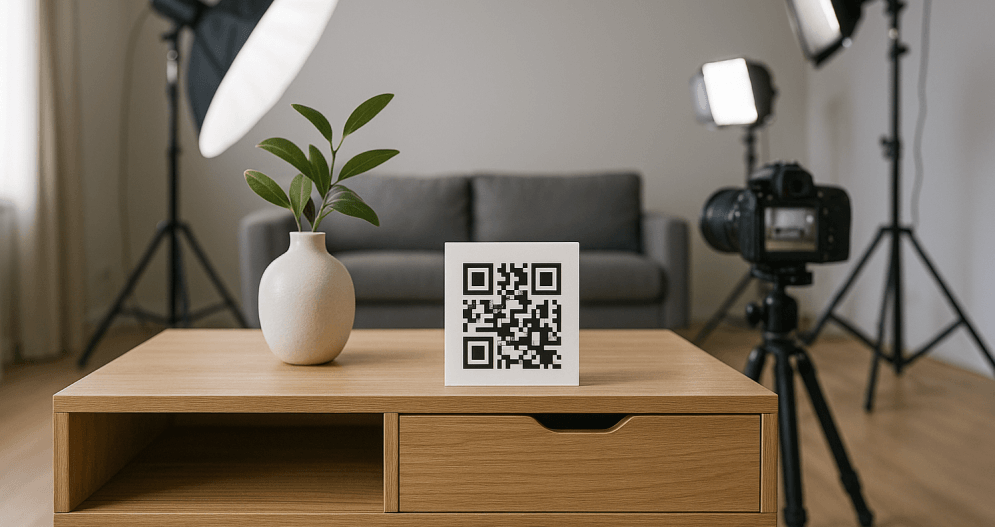When you’re planning your next product launch or catalog update, the choice between 3D visualization vs traditional photoshoots can feel like a fork in the road.
Do you book a studio, hire models, and hope the weather cooperates? Or do you skip the logistics and build your entire scene digitally? If you’re a furniture brand or interior designer, this choice shapes your workflow, budget, and marketing results, providing valuable insights into your strategy .
Let’s unpack both sides clearly and show you how 3D can change the game and open up endless possibilities without the learning curve you might expect.
What is traditional product photography still good for?
Traditional photography has long been the go-to method for showcasing physical products. From glossy catalogs to lifestyle images, it delivers real photos with tangible authenticity.
Professional photographers, physical prototypes, and real models come together to create visually appealing scenes with emotional resonance.
But there’s a catch. Traditional product photography is expensive, time-consuming, and logistically intense.
Before you can publish, you need to deal with outdoor shoots, real-world lighting conditions, physical samples, and a full post-production editing process. If you’re creating images for multiple product variations or marketing campaigns, this quickly becomes overwhelming.
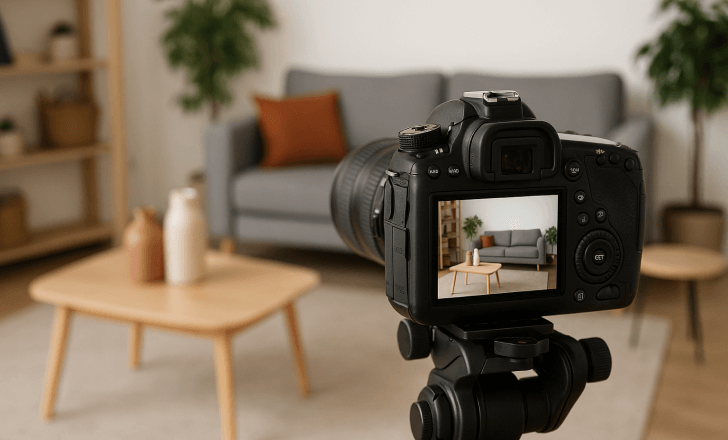
How does 3D product visualization work?
3D visualization uses rendering software and advanced technology to create high-quality digital images of your product.
Instead of photographing a real item, you use a digital model and computer software to simulate how the product would look in a real environment. With platforms like RealityMAX, this technique is now accessible to teams without any technical skills.
You can upload a single image of your product — even just a snapshot — and let our AI-enhanced workflow convert it into a fully textured 3D product.
From there, you can visualize it in any setting, rotate it from any angle, and create an unlimited number of variations without building or shipping a single physical sample.
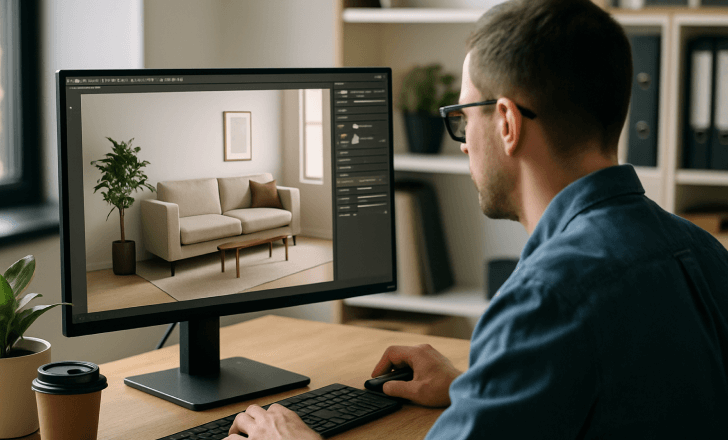
Why are brands moving away from traditional photoshoots?
The shift isn’t just about trends. It’s about solving real pain points:
- Traditional photoshoots require professional photographers, props, and expensive location setups.
- Physical products must be manufactured or prototyped first, which delays marketing efforts.
- Post-production editing and post-processing eat up time and budget.
- Outdoor conditions or camera angles can limit consistency across your visual assets.
In contrast, 3D rendering is cost-effective, scalable, and lightning fast. It eliminates delays, minimizes environmental impact, and adapts to e-commerce needs where visual content must be constantly updated and personalized.
What are the key advantages of 3D rendering?
Let’s break it down:
Speed and flexibility
You can respond quickly to market trends or product updates. No need to reshoot when something changes.
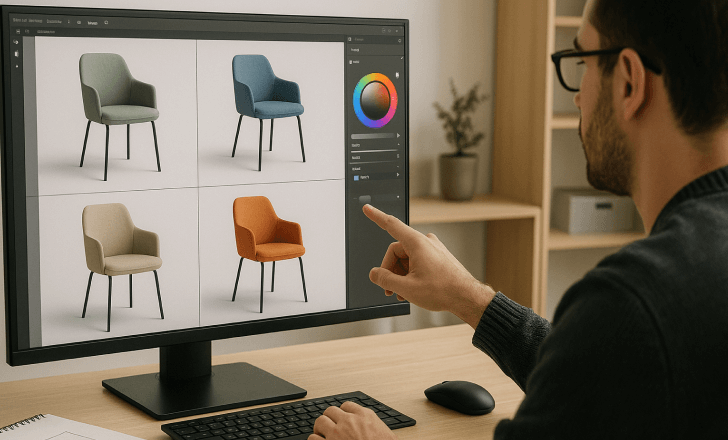
Cost efficiency
No more budgeting for travel, props, lighting gear, or physical samples. One digital model can serve an entire product marketing campaign, contributing to time efficiency .
Creative possibilities
Want to show a sofa in five colorways inside ten different rooms? With 3D, it’s a few clicks, not five new photoshoots.
Visual quality
You can generate images that rival or beat traditional photographs with ray tracing, global illumination, and machine learning tools.
Emotional connection
Far from being cold or robotic, 3D visuals let you craft an entire scene that supports visual storytelling and builds an emotional connection with your audience.
What if I don’t have technical skills or 3D software?
That’s exactly what we built RealityMAX to solve. You don’t need specialized software or 3D experience. Our platform uses AI image enhancement and image-to-3D conversion to do the heavy lifting for you.
Just upload a basic image of your product. RealityMAX transforms it into a realistic, editable 3D product that you can place into any scene.
You can adjust the lighting, materials, and even add custom branding. No modeling. No code. No waiting.
Can 3D visualization replace traditional photography completely?
Yes, in many industries, especially where speed, variation, or product visualization at scale is essential.
Furniture brands, for instance, can ditch the need for physical prototypes and instead use computer-generated imagery to preview every finish or configuration instantly.
Still, certain scenarios may benefit from traditional photography. For example, products involving real people (like fashion) or complex textures might still require a real-world shoot. But even then, mixing traditional photography and 3D can yield the best of both worlds.
How does this help with e-commerce and digital marketing?
Online shoppers expect to see every angle, variation, and context, especially for high-involvement products like furniture or home decor. 3D visualization allows you to meet these expectations with accurate representation and unlimited variations, ultimately producing high quality images .
It also shortens the time to market. While traditional photoshoots may delay your go-to-market timeline due to sample delays or post-production, 3D assets are ready when you are.
You can even test different product marketing angles or run A/B tests using multiple environments before launching.
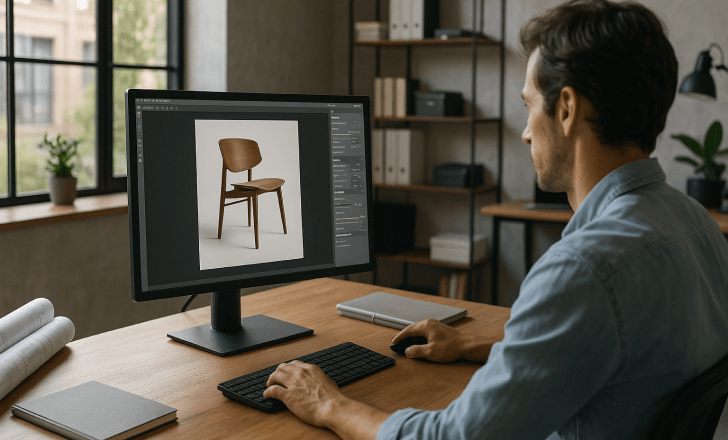
What’s the environmental impact of each approach?
Traditional product photography generates significant waste: shipping physical products, energy consumption during lighting setups, and discarded physical samples all add up.
By comparison, 3D rendering is more sustainable, using fewer resources while enabling businesses to stay relevant and efficient.
It’s not just about cost-effective solutions. It’s about more intelligent resource allocation that aligns with modern brand values.
What makes RealityMAX different from other 3D tools?
Most rendering software is built for professionals. We built RealityMAX for marketers, designers, and creative teams who want stunning visual content without friction.
You don’t need a CGI team or expensive gear. You need your product and an idea.
From AI-generated backgrounds to intuitive drag-and-drop controls, RealityMAX helps you create lifelike 3D environments that support storytelling, enhance product marketing, and unlock a competitive advantage through effective product visualization all without touching a line of code.
So, which is better: 3D visualization or traditional photography?
Here’s the truth: It depends on what you need. Traditional photography still has a place, but it’s no longer the only way—or even the best way—to get high-quality images. If you want speed, flexibility, and scale, 3D product rendering is the smarter choice.
And thanks to platforms like RealityMAX, it’s no longer limited to studios or specialists.
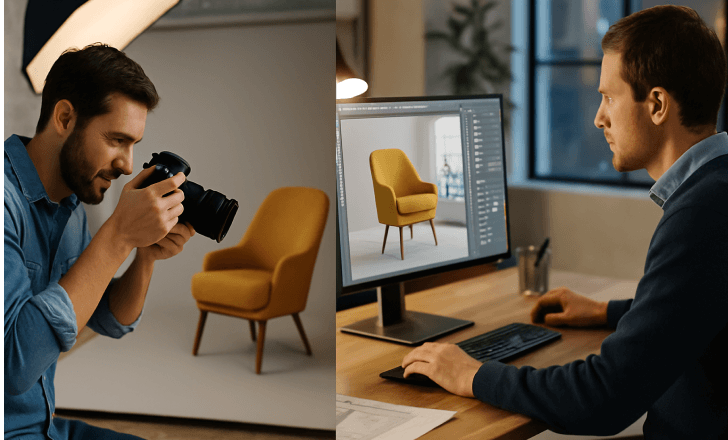
What’s next for product visualization?
As product visualization evolves, the line between real and virtual keeps blurring. With AI, augmented reality, and machine learning accelerating every year, the tools are no longer the bottleneck. The only question is how fast your team wants to move.
At RealityMAX, we’re making that jump easy. Whether you’re rethinking your next catalog or launching a new e-commerce experience, we’re here to help you make it look — and feel — real.
